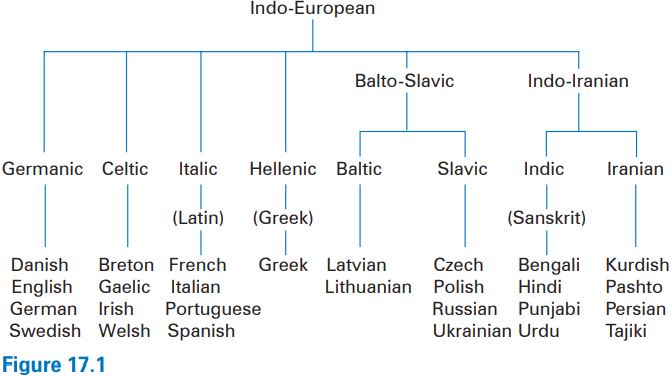
Family trees
 المؤلف:
George Yule
المؤلف:
George Yule
 المصدر:
The study of language
المصدر:
The study of language
 الجزء والصفحة:
225-17
الجزء والصفحة:
225-17
 4-3-2022
4-3-2022
 1002
1002
Family trees
In 1786, a British government official in India called Sir William Jones made the following observation about Sanskrit, the ancient language of Indian law.
The Sanskrit language, whatever be its antiquity, is of a wonderful structure; more perfect than the Greek, more copious than the Latin, and more exquisitely refined than either, yet bearing to both of them a stronger affinity, both in the roots of verbs and in the forms of grammar, than could possibly have been produced by accident.
Sir William went on to suggest, in a way that was quite revolutionary for its time, that a number of languages from very different geographical areas must have some common ancestor. It was clear, however, that this common ancestor could not be described from any existing records, but had to be hypothesized on the basis of similar features existing in records of languages that were believed to be descendants.
During the nineteenth century, a term came into use to describe that common ancestor. It incorporated the notion that this was the original form (Proto) of a language that was the source of modern languages in the Indian subcontinent (Indo) and in Europe (European). With Proto-Indo-European established as some type of “greatgreat-grandmother,” scholars set out to identify the branches of the Indo-European family tree, tracing the lineage of many modern languages. The accompanying diagram shows a small selection of the Indo-European languages in their family branches.
Indo-European is the language family with the largest population and distribution in the world, but it isn’t the only one. There are about thirty such language families containing more than 6,000 different individual languages. According to one reputable source (Ethnologue, 2005), there are actually 6,912 languages in the world. Many of these languages are in danger of extinction while a few are expanding. In terms of number of speakers, Chinese has the most native speakers (about 1 billion), while English (about 350 million) is more widely used in different parts of the world.

 الاكثر قراءة في History
الاكثر قراءة في History
 اخر الاخبار
اخر الاخبار
اخبار العتبة العباسية المقدسة


